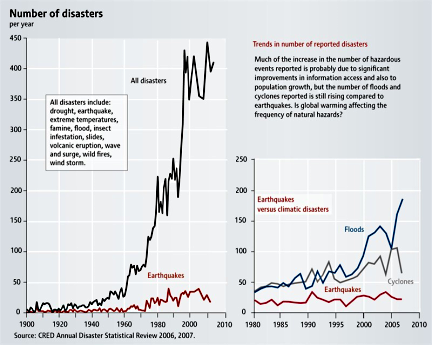Which are we more likely to believe: fact or fiction? There’s been much written about the “fact” that many Americans don’t believe in “facts.” Or to put it another way, what defines a fact? When does a theory become a scientific consensus, and is that different from a fact?
The point of relevance, of course, is Superstorm Sandy. The “Frankenstorm” scenario that just transformed from run-of-the-mill screenplay to reality – that is, from fiction to fact — is not that much different from any number of eco-disaster movies: global warming-fueled hurricane converges with winter storm to devastate the NY region. It even has a subplot, what with the election next week and pundits wondering how that will be affected. (Did Christie stick it to Romney by complimenting Obama?)
We’ve been warned by a tsunami of dramatic scenarios, ranging from the mildly plausible The Day After Tomorrow – yes, there actually is some theoretical basis in its explanation if not in its timeline — to the sneakily messaged Wall-E, and from there to made- for-TV dreck that doesn’t even qualify for B-movie status. (Can I please have back the late nights I’ve lost hoping that some SyFy channel rerun will actually give me something to write about. Oh wait, they just did.)

I’m fascinated by post-apocalyptic visions and have lately been treated to a (genetically modified?) harvest of TV series. More on that in another post. What we’re pondering here is what it will take to convince us, as a country, that climate disruption is real, and that it poses “a real and present danger” (stealing from yet another movie). It’s easy to understand why fictional tales haven’t swayed the skeptics. They are, after all, fiction. But real life is another story. When the real thing occurs, we rationalize that any individual weather event does not serve as proof of a pattern, let alone a pattern that is induced by us. But when does the pattern add up to a new reality? At the Institute for Policy Studies, Daphne Wysham writes
[W]e are fooling ourselves, again and again, just as our children do every Halloween. This Frankenstorm, can we stop fooling ourselves? Our planet desperately needs us to act like adults and get beyond [just] responding to one storm after another, as though each one were a unique shock, and not related to an overall climate crisis of enormous proportions.
Will we see the pattern through the politics? If not, how many more puzzle pieces will be needed?
Or, if you prefer the more “rational” economic argument, when does the cost of climate-induced damage exceed the cost of action to curtail further climate disruption? (And – we have to ask ourselves – how does the cost of adaptation and resilience figure in?) A barely three week old report from the insurance giant Munich Re says the US losses from weather catastrophes from 1980 to 2011 amounted to more than $1 trillion. And 30,000 deaths. I don’t have more numbers handy (I really need an intern), but I strongly suspect that if we added up the costs of disasters that were caused or exacerbated by fossil fuel related activities, they would be greater than the costs of switching to alternative energy sources. And if they aren’t, well then, it doesn’t take much imagination to extrapolate that they will be in the near future.
So, as I write this from my temporary Manhattan-refugee location in Brooklyn (with much thanks to my wife’s brother and sister-in-law), I come back to the point of EcoOptimism. If you need to rationalize the environmental steps advocated by the “alarmists,” if in the term scientific consensus you hear only the word con, then forget about the stick for a moment and focus on the carrot. The steps to a carbon neutral existence will also improve our lives. I’m not talking about the idea of sustainability, which is merely ensuring that humanity can continue to exist (as if that isn’t a basic enough goal), but the idea that we also will be better off after buying the insurance. We’re talking about tangibles like better health as well as intangibles such as spending less time and money keeping apace with the treadmill and more time to spend on things and activities that really make us better people.
Most times when we buy insurance, it’s just to protect ourselves from exposure to future costs. Buy fire insurance and, if your house burns down, the insurance buys you another one. But environmental “insurance,” whether it be in the form of a carbon tax or something else, is not merely money thrown at a potential problem to cover your potential losses. (Never mind that no amount of insurance can buy us another planet.) It’s money that is directed against an all but certain eventuality and at the same time has the ability to improve the value of the asset you’re protecting: your life. That has to be the deal of a “lifetime.”






